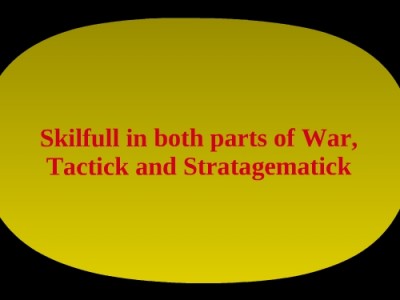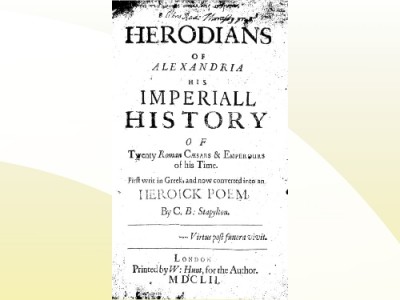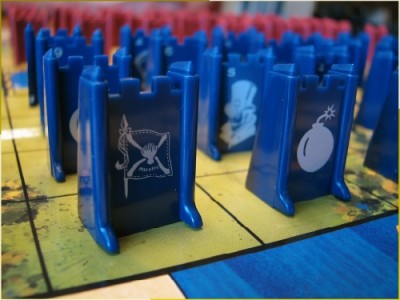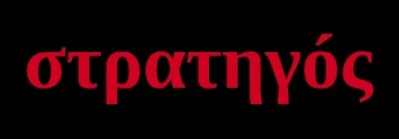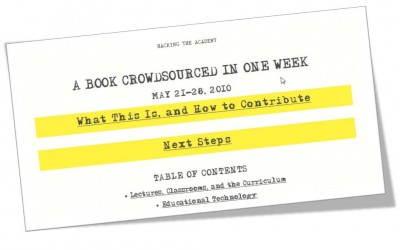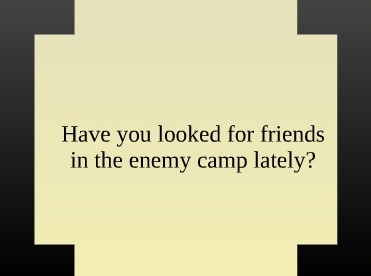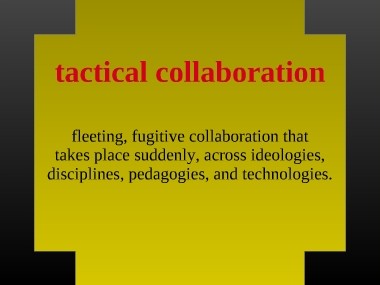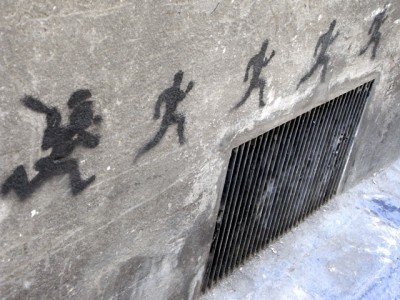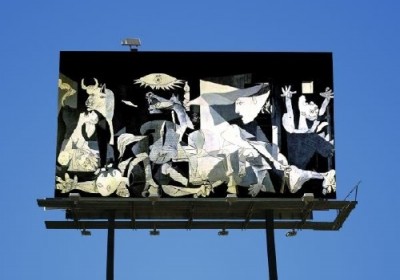- Explore the dark web
- Mod a videogame
- Witness the Network Effect
- Make counter-animated GIFs
- Research alternative timelines of gamergate
- Decide whom to kill with self-driving cars
- Write one billion poems
- Read videogame code
- Build speculative designs with Arduinos
- Visualize something that will outlast the heat death of the sun
Tag: hacking
“Deep” Textual Hacks
A computational and pedagogical workshop
I put “deep” in scare quotes but really, all three words should have quotes around them—”deep” “textual” “hacks”—because all three are contested, unstable terms. The workshop is hands-on, but I imagine we’ll have a chance to talk about the more theoretical concerns of hacking texts. The workshop is inspired by an assignment from my Hacking, Remixing, and Design class at Davidson, where I challenge students to create works of literary deformance that are complex, intense, connected, and shareable. (Hey, look, more contested terms! Or at the very least, ambiguous terms.)
We don’t have much time for this workshop. In this kind of constrained setting I’ve found it helps to begin with templates, rather than creating something from scratch. I’ve also decided we’ll steer clear of Python—what I’ve been using recently for my own literary deformances—and work instead in the browser. That means Javascript. Say what you want about Javascript but you can’t deny that Daniel Howe’s RiTA library is a powerful tool for algorithmic literary play. But we don’t even need RiTA for our first “hack”:
- Taroko Gorge (2009) by Nick Montfort
What’s great about “Taroko Gorge” is how easy it is to hack. Dozens have done it, including me. All you need is a browser and a text editor. Nick never explicitly released the code of “Taroko Gorge” under a free software license, but it’s readily available to anyone who views the HTML source of the poem’s web page. Lean and elegantly coded, with self-evident algorithms and a clearly demarcated word list, the endless poem lends itself to reappropriation. Simply altering the word list (the paradigmatic axis) creates an entirely different randomly generated poem, while the underlying sentence structure (the syntagmatic axis) remains the same.
The next textual hack template we’ll work with is my own:
This little generator is essentially half of @_LostBuoy_. It generates Markov chains from a source text, in this case, Moby-Dick. What’s a Markov chain? It’s a probabilistic chain of n-grams, that is, words. The algorithm examines a source text and figures out which word or words are likely to follow another word or other words. The “n” in n-gram refers to the number of words you want the algorithm to look for. For example, a bi-gram Markov chain calculates which pair of words are likely to follow another pair of words. Using this technique, you can string together sentences, paragraphs, or entire novels. The higher the “n” the more likely the output is to resemble the source material—and by extension, sensible English. Whereas “Taroko Gorge” plays with the paradigmatic axis (substitution), Markov chains play along the syntagmatic axis (sentence structure). There are various ways to calculate Markov chains; creating a Markov chain generator is even a common Intro to Computer Science assignment. I didn’t build my own generator, and you don’t have to either. I use RiTA, a Javascript (and Processing) library that works in the browser, with helpful documentation.
The final deformance is a web-based version of the popular @JustToSayBot:
- Just To Say (web version) (source plus also grab RiTA again and JQuery)
And I have a challenge here: thanks to the 140-character limit of Twitter, the bot version of this poem is missing the middle verse. The web has no such limit, of course, so nothing is stopping workshop participants from adding the missing verse. Such a restorative act of hacking would be, in a sense, a de-deformance, that is, making my original deformance less deformative, more like the original.
Notes towards a Deformed Humanities
 I’ve gone on record as saying that the digital humanities is not about building. It’s about sharing. I stand by that declaration. But I’ve also been thinking about a complementary mode of learning and research that is precisely the opposite of building things. It is destroying things.
I’ve gone on record as saying that the digital humanities is not about building. It’s about sharing. I stand by that declaration. But I’ve also been thinking about a complementary mode of learning and research that is precisely the opposite of building things. It is destroying things.
I want to propose a theory and practice of a Deformed Humanities. A humanities born of broken, twisted things. And what is broken and twisted is also beautiful, and a bearer of knowledge. The Deformed Humanities is an origami crane—a piece of paper contorted into an object of startling insight and beauty.
I come to the Deformed Humanities (DH) by way of a most traditional route—textual scholarship. In 1999 Lisa Samuels and Jerry McGann published an essay about the power of what they call “deformance.” This is a portmanteau that combines the words performance and deform into an interpretative concept premised upon deliberately misreading a text, for example, reading a poem backwards line-by-line.
As Samuels and McGann put it, reading backwards “short circuits” our usual way of reading a text and “reinstalls the text—any text, prose or verse—as a performative event, a made thing” (Samuels & McGann 30). Reading backwards revitalizes a text, revealing its constructedness, its seams, edges, and working parts.
In many ways this idea of textual transformation as an interpretative maneuver is nothing new. Years before Samuels and McGann suggested reading backward as the paradigmatic deformance, the influential composition professor Peter Elbow suggested reading a poem backwards as a way to “breathe life into a text” (Elbow 201).
Still, Samuels and McGann point out that “deformative scholarship is all but forbidden, the thought of it either irresponsible or damaging to critical seriousness” (Samuels & McGann 34–35). Yet deformance has become a key methodology of the branch of digital humanities that focuses on text analysis and data-mining.
This is an argument that Steve Ramsay makes in Reading Machines. Computers let us practice deformance quite easily, taking apart a text—say, by focusing on only the nouns in an epic poem or calculating the frequency of collocations between character names in a novels.
Deformance is a Hedge
But however much deformance sounds like a progressive interpretative strategy, it actually reinscribes more conventional acts of interpretation. Samuels and McGann suggest—and many digital humanists would agree—that “we are brought to a critical position in which we can imagine things about the text that we did not and perhaps could not otherwise know” (36). And this is precisely what is wrong with the idea of deformance: it always circles back to the text.
Even the word itself—deformance—seems to be a hedge. The word is much more indebted to the socially acceptable activity of performance than the stigmatized word deformity. It reminds me of a scene in Alison Bechdel’s graphic memoir Fun Home, where the adult narrator Alison comments upon her teenage self’s use of the word “horrid” in her diary. “How,” Bechdel muses, “horrid has a slightly facetious tone that strikes me as Wildean. It appears to embrace the actual horror…then at the last second nimbly sidesteps it” (Bechdel 174). In a similar fashion, deformance appears to embrace the actual deformity of a text and then at the last possible moment sidesteps it. The end result of deformance as most critics would have it is a sense of renewal, a sense of de-forming only to re-form.
To evoke a key figure motivating the playfulness Samuels and McGann want to bring to language, deformance takes Humpty Dumpty apart only to put Humpty Dumpty back together again.
And this is where I differ.
 I don’t want to put Humpy Dumpty back together.
I don’t want to put Humpy Dumpty back together.
Let him lie there, a cracked shell oozing yolk. He is broken. And he is beautiful. The smell, the colors, the flow, the texture, the mess. All of it, it is unavailable until we break things. And let’s not soften our critical blow by calling it deformance. Name it what it is, a deformation.
In my vision of the Deformed Humanities, there is little need to go back to the original. We work—in the Stallybrass sense of the word—not to go back to the original text with a revitalized perspective, but to make an entirely new text or artifact.
The deformed work is the end, not the means to the end.
The Deformed Humanities is all around us. I’m only giving it a name. Mashups, remixes, fan fiction, they are all made by breaking things, with little regard for preserving the original whole. With its emphasis on exploring the insides of things, the Deformed Humanities shares affinities with Ian Bogost’s notion of carpentry, the practice of making philosophical and scholarly inquiries by constructing artifacts rather than writing words. In Alien Phenomenology, Or, What It’s Like to Be a Thing, Bogost describes carpentry as “making things that explain how things make their world” (93). Bogost goes on to highlight several computer programs he’s built in order to think like things—such as I am TIA, which renders the Atari VCS’s “view” of its own screen, an utterly alien landscape compared to what players of the Atari see on the screen. Where carpentry and the Deformed Humanities diverge is in the materials being used. Carpentry aspires to build from scratch, whereas the Deformed Humanities tears apart existing structures and uses the scraps.
For a long while I’ve told colleagues who puzzle over my own seemingly disparate objects of scholarly inquiry that “I study systems that break other systems.” Systems that break other systems is the thread that connects my work with electronic literature, graphic novels, videogames, code studies, and so on. Yet I had never thought about my own work as deformative until earlier this year. And it took someone else to point it out. This was my colleague Tom Scheinfeldt, the managing director of the Roy Rosenzweig Center for History and New Media. In February, Scheinfeldt gave a talk at Brown University in which he argued that the game-changing element of the digital humanities was its performative aspect.
 Scheinfeldt uses Babe Ruth as an analogy. Ruth wasn’t merely the homerun king. He essentially invented homeruns as a strategy, transforming the game. As Scheinfeldt puts it, “the change Ruth made wasn’t engendered by him being able to bunt or steal more effectively than, say, Ty Cobb…it was engendered by making bunting and stealing irrelevant, by doing something completely new.”
Scheinfeldt uses Babe Ruth as an analogy. Ruth wasn’t merely the homerun king. He essentially invented homeruns as a strategy, transforming the game. As Scheinfeldt puts it, “the change Ruth made wasn’t engendered by him being able to bunt or steal more effectively than, say, Ty Cobb…it was engendered by making bunting and stealing irrelevant, by doing something completely new.”
Scheinfeldt then picks up on Ramsay’s use of “deformance” to suggest that what’s game-changing about digital technology is the way it allows us “to make and remake” texts in order “to produce meaning after meaning.”
Hacking the Accident
As an example, Scheinfeldt mentions a project of mine, which I had never thought about in terms of deformance. This was a digital project and e-book I made last fall called Hacking the Accident.
Hacking the Accident is a deformed version of Hacking the Academy, an edited collection forthcoming by the digitalculturebooks imprint of the University of Michigan Press. Hacking the Academy is a scholarly book about the disruptive potential of the digital humanities, crowdsourced in one week and edited by Dan Cohen and Tom Scheinfeldt.
Taking advantage of the generous BY-NC Creative Commons license of the book, I took the entire contents of Hacking the Academy, some thirty something essays by leading thinkers in the digital humanities, and subjected them to the N+7 algorithm used by the Oulipo writers. This algorithm replaces every noun—every person, place, or thing—in Hacking the Academy with the person, place, or thing—mostly things—that comes seven nouns later in the dictionary.
The results of N+7 would seem absolutely nonsensical, if not for the disruptive juxtapositions, startling evocations, and unexpected revelations that ruthless application of the algorithm draws out from the original work. Consider the opening substitution of Hacking the Academy, sustained throughout the entire book: every instance of the word academy is literally an accident.
Other strange transpositions occur. Every fact is a fad and print is a prison. Instructors are insurgents and introductions are invasions. Questions become quicksand. Universities, uprisings. Scholarly associations wither away to scholarly asthmatics. Disciplines are fractured into discontinuities. Writing, the thing that absorbs our lives in the humanities, writing, the thing that we produce and consume endlessly and desperately, writing, the thing upon which our lives of letters is founded—writing, it is mere “yacking” in Hacking the Accident.
These are merely the single word exchanges, but there are longer phrases that are just as striking. Print-based journals turn out as prison-based joyrides, for example. I love that The Chronicle of Higher Education always appears as The Church of Higher Efficiency; it’s as if the newspaper was calling out academia for what it has become—an all-consuming, totalizing quest for efficiency and productivity, instead of a space of learning and creativity.
Consider the deformed opening lines of Cohen’s and Scheinfeldt’s introduction, which quotes from their original call for papers:
At the most obvious level, the work is a parody of academic discourse, amplifying the already jargon-heavy language of academia with even more incomprehensible language. But one level down there is a kind of Bakhtinian double-voiced discourse at work, in which the original intent is still there, but infused with meanings hostile to that intent—the print/prison transposition is a good example of this.
I’m convinced that Hacking the Accident is not merely a novelty. It’d be all too easy to dismiss the work as a gag, good for a few amusing quotes and nothing more. But that would overlook the several levels in which Hacking the Accident acts as a kind of intervention into academia. A deformation of the humanities. A deformation that doesn’t strive to put the humanities back together and reestablish the integrity of a text, but rather, a deformation that is a departure, leading us somewhere new entirely.
The Deformed Humanities—though most may not call it that—will prove to be the most vibrant and generative of all the many strands of the humanities. It is a legitimate mode of scholarship, a legitimate mode of doing and knowing. Precisely because it relies on undoing and unknowing.
Works Cited
Ayaroglu, Emre. Grulla. 2008. 19 Feb. 2012. <http://www.flickr.com/photos/emraya/3043088482/>.
Bechdel, Alison. Fun Home: A Family Tragicomic. Boston: Houghton Mifflin, 2007. Print.
Bogost, Ian. Alien Phenomenology, or, What It’s Like to Be a Thing. Minneapolis: University of Minnesota Press, 2012. Print.
Elbow, Peter. “Breathing Life into the Text.” When Writing Teachers Teach Literature: Bringing Writing to Reading. Portsmouth, NH: Heinemann, 1995. 193–205. Print.
Ramsay, Stephen. Reading Machines: Toward and Algorithmic Criticism. University of Illinois Press, 2011. Print.
Samuels, Lisa, and Jerome McGann. “Deformance and Interpretation.” New Literary History 30.1 (1999) : 25–56. Print.
Scheinfeldt, Tom. “Game Change: Digital Technology and Performative Humanities.” Found History 15 Feb. 2012. 19 Feb. 2012. <http://www.foundhistory.org/2012/02/15/game-change-digital-technology-and-performative-humanities/>.
Stallybrass, Peter. “Against Thinking.” PMLA 122.5 (2007) : 1580–1587. Print.
Hacking the Academy: The Ebook Volume
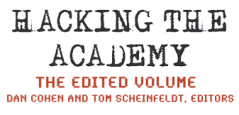 On September 8, the DigitalCultureBooks imprint of the University of Michigan Library and University Michigan Press released the online edition of Hacking the Academy. Conceived of by Dan Cohen and Tom Scheinfeldt at GMU’s Roy Rosenzweig Center for History and New Media, Hacking the Academy is an experiment in publishing. It’s a crowdsourced book, in which contributors had merely one week (May 21-28, 2010) to come up with and submit material. It’s also heavily edited, with Dan and Tom shaping the mass—the mess?—of possible submissions into a cohesive, coherent work. Authors include professors, graduate students, journalists, archivists, and alternate academic career visionaries. (Full disclosure: I’m in there too.)
On September 8, the DigitalCultureBooks imprint of the University of Michigan Library and University Michigan Press released the online edition of Hacking the Academy. Conceived of by Dan Cohen and Tom Scheinfeldt at GMU’s Roy Rosenzweig Center for History and New Media, Hacking the Academy is an experiment in publishing. It’s a crowdsourced book, in which contributors had merely one week (May 21-28, 2010) to come up with and submit material. It’s also heavily edited, with Dan and Tom shaping the mass—the mess?—of possible submissions into a cohesive, coherent work. Authors include professors, graduate students, journalists, archivists, and alternate academic career visionaries. (Full disclosure: I’m in there too.)
As Jason Jones notes on ProfHacker, the book has been coming out in stages. From the first, a unedited, raw collection of all the submissions was aggregated at Hacking the Academy. Now, the edited online volume has been released. In 2012, a print edition will be available as well.
Because the book is being published under a Creative Commons non-commercial license, anybody is free to share or remix the work, as long the original authors and editors are properly attributed. This license is another way the book is an experiment—a major academic publisher is giving free license to anyone to shape, circulate, or reimagine the book.
Here, then, is my initial contribution to the Hacking the Academy ecology: I’ve compiled and formatted the online edited volume into ebook form, suitable for reading on Kindles, Nooks, iPads, and so on. (Hat tip to my colleague Mills Kelly for giving me the idea.)
- Hacking the Academy epub (for Nooks and iPads)
- Hacking the Academy mobi (for Kindles)
- Hacking the Academy PDF
Tactical Collaborations (2011 MLA Version)
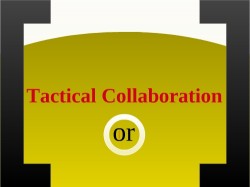 [I was on a panel called “The Open Professoriat(e)” at the 2011 MLA Convention in Los Angeles, in which we focused on the dynamic between academia, social media, and the public. My talk was an abbreviated version of a post that appeared on samplereality in July. Here is the text of the talk as I delivered it at the MLA, interspersed with still images from my presentation. The original slideshow is at the end of this post. Co-panelists Amanda French and Erin Templeton have also posted their talks online.]
[I was on a panel called “The Open Professoriat(e)” at the 2011 MLA Convention in Los Angeles, in which we focused on the dynamic between academia, social media, and the public. My talk was an abbreviated version of a post that appeared on samplereality in July. Here is the text of the talk as I delivered it at the MLA, interspersed with still images from my presentation. The original slideshow is at the end of this post. Co-panelists Amanda French and Erin Templeton have also posted their talks online.]
Rather than make an argument in the short time I have, I want to make a provocation, urging everyone here to consider the way social media can enable what I call tactical collaborations both within and outside of the professoriate.
I’ve always had trouble keeping the words tactic and strategy straight. Or, as early forms of the words appear in the OED, tactick and the curiously elongated stratagematick.
This quote comes from a 17th century translation of a history of Roman emperors (circa 240 AD).
I love the quote and it tells me that tactics and strategy have always been associated with battle. But I still have trouble telling one from the other. I know one is, roughly speaking, short term, while the other is long range. One is the details and the other the big picture.
I’ll blame the old board game Stratego for my confusion. The placement of my flag, the movement of my scouts, that seemed tactical to me, yet the game was called Stratego.
Even diving into the etymology of the words doesn’t help much at first: Tactic is from the ancient Greek τακτóς, meaning arranged or ordered.
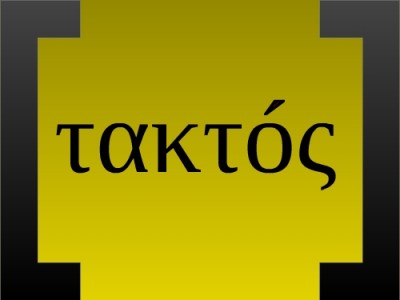 While Strategy comes from the Greek στρατηγóς, meaning commander or general. A general is supposed to be a big-picture kind of guy, so I guess that makes sense. And I suppose the arrangement of individual elements comes close to the modern day meaning of a military tactic.
While Strategy comes from the Greek στρατηγóς, meaning commander or general. A general is supposed to be a big-picture kind of guy, so I guess that makes sense. And I suppose the arrangement of individual elements comes close to the modern day meaning of a military tactic.
All of this curiosity about the meaning of the word tactic began last May, when Dan Cohen and Tom Scheinfeldt at the Center for History and New Media at George Mason University announced a crowd-sourced book called Hacking the Academy. They announced it on Twitter on Friday, May 21 and by Friday, May 28, one week later, all the submissions were in. 330 submissions from nearly 200 people.
The collection is now in the final stages of editing, with a table of contents of around 60 pieces by 40 or so different authors. It will be peer-reviewed and published by Digital Culture Books, an imprint of the University of Michigan Press. As you can imagine, the idea of crowdsourcing a scholarly book, in a week no less, generated excitement, questions, and some worthwhile skepticism.
And it was one of these critiques of Hacking the Academy that prompted my thoughts about tactical collaboration. Jennifer Howard, a senior reporter for The Chronicle of Higher Education, posed several questions that would-be hackers ought to consider during the course of hacking the academy. It was Howard’s last question that resonated most with me.
Have you looked for friends in the enemy camp lately? Howard cautioned us that some of the same institutional forces we think we’re fighting might actually be allies when we want to be a force for change. I read Howard’s question and I immediately began rethinking what collaboration means. Instead of a commitment, it’s an expedience. Instead of strategic partners, find immediate allies. Instead of full frontal assaults, infiltrate and disseminate.
In academia we have many tactics for collaboration, but very little tactical collaboration.
And this is how I defined tactical collaboration:
I’m reminded of de Certeau’s vision of tactics in The Practice of Everyday Life. Unlike a strategy, which operates from a secure base, a tactic, as de Certeau writes, operates “in a position of withdrawal…it is a maneuver ‘within the enemy’s field of vision’” (37).
De Certeau goes on to add that a tactic “must vigilantly make use of the cracks….It poaches in them. It creates surprises in them. It can be where it is least expected” (37).
So that’s what a tactic is. I should’ve skipped the OED and Stratego and headed straight for de Certeau. He teaches us that strategies, like institutions, depend upon dominance over space—physical as well as discursive space. But tactics rely upon momentary victories in and over time. Tactics require agility, surprise, feigned retreats as often as real retreats. They require collaborations that the more strategically-minded might otherwise discount. And social media presents the perfect landscape for these tactical collaborations to play out.
Despite my being here today, I’m very skeptical of institutions and associations. We live in a world where we can’t idly hope for or rely upon institutional support or recognition. To survive and thrive, humanists must be fleet-footed, mobile, insurgent. Decentralized and nonhierarchical. We need to stop forming committees and begin creating coalitions. We need affinities over affiliations, and networks over institutes.
Tactical collaboration is crucial for any humanist seeking to open up the professoriate, any scholar seeking to poach from the institutional reserves of knowledge production, any teacher seeking to challenge the ever intensifying bureaucratization and Taylorization of learning, any contingent faculty seeking to forge success and stability out of contingency.
We need tactical collaborations, and we need them now. The strategematick may be the domain of emperors and institutions, but like the word itself, it’s quaint and outdated. Let tactics be our ruse and our practice.
Bibliography
Certeau, Michel de. The Practice of Everyday Life. Berkeley: University of California Press, 1984. Print.
Herodian. Herodians of Alexandria his imperiall history of twenty Roman caesars & emperours of his time / First writ in Greek, and now converted into an heroick poem by C.B. Staplyton. London: W. Hunt, 1652. Web. 14 July 2010.
Image Credits
(1) Chase, Andy. Stratego. 2009. <http://www.flickr.com/photos/usonian/3580565990/>.
(2) ;P, Mayu. f1947661. 2008. <http://www.flickr.com/photos/mayu/4778962420/>.
(3) Unger, John T. “American Guernica: A Call for Guerilla Public Art.” <http://johntunger.typepad.com/studio/2005/10/the_guernica_pr.html>.
(4) Oppenheim, Dennis. Reading Position for Second Degree Burn. 1970. <http://www.artinfo.com/news/enlarged_image/21237/14781/>.
(5) Bauman, Frederick. Stratego Family. 2007. <http://www.flickr.com/photos/livingfrisbee/1499088800/>.
